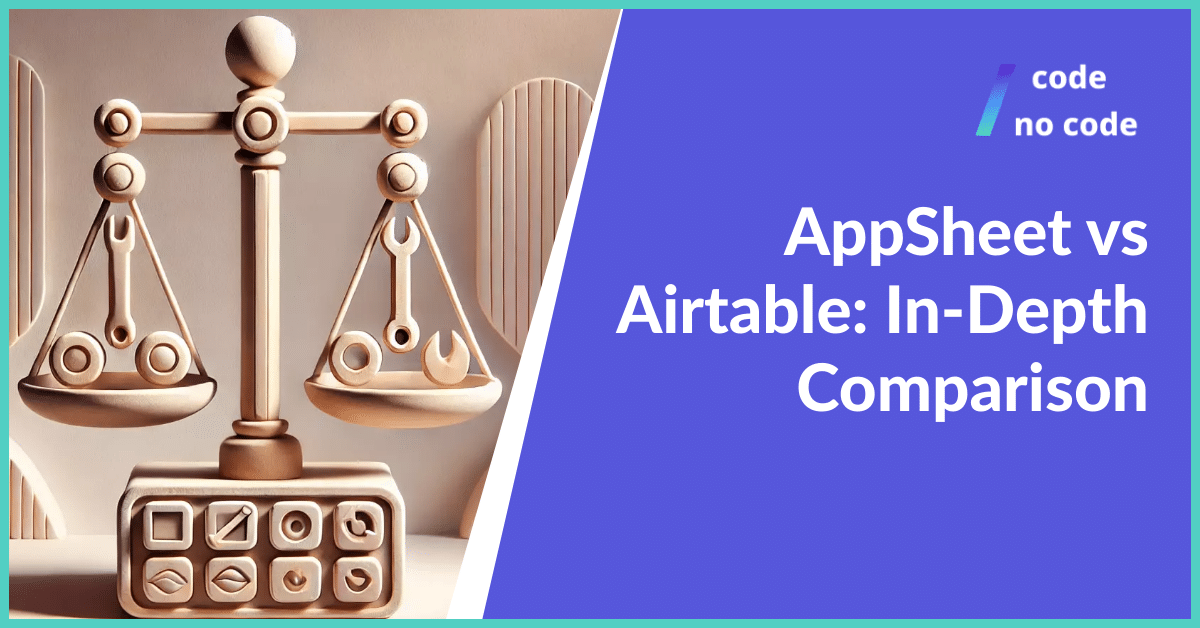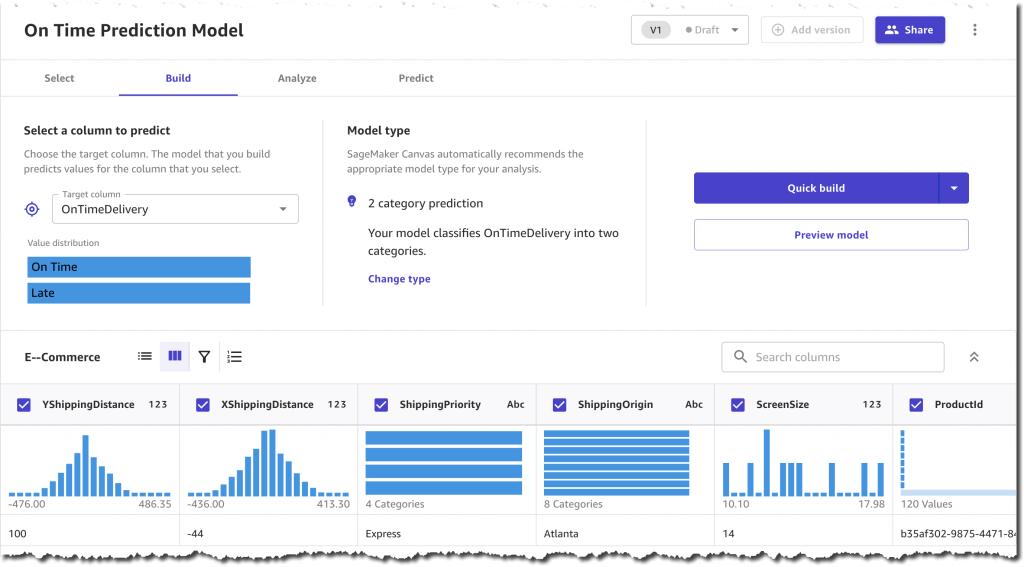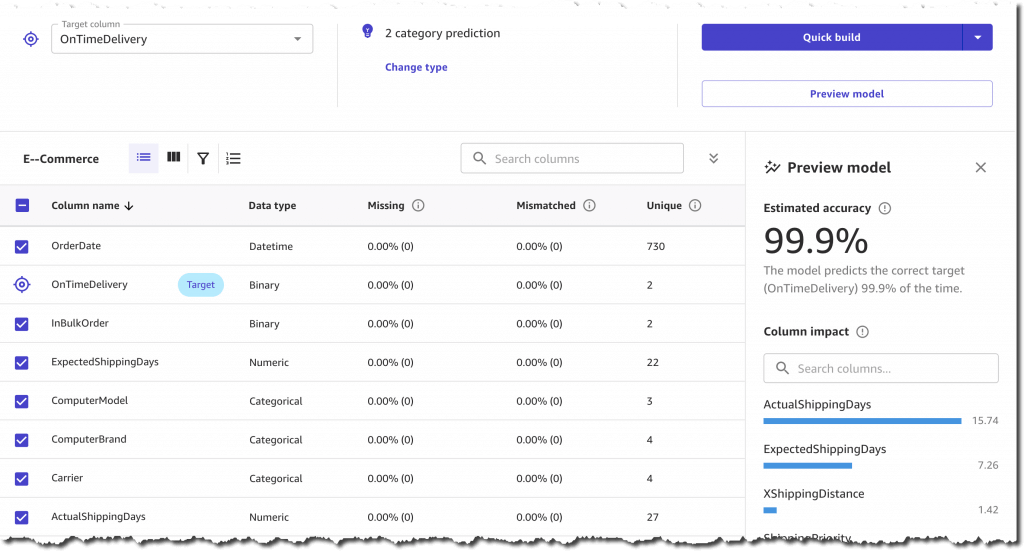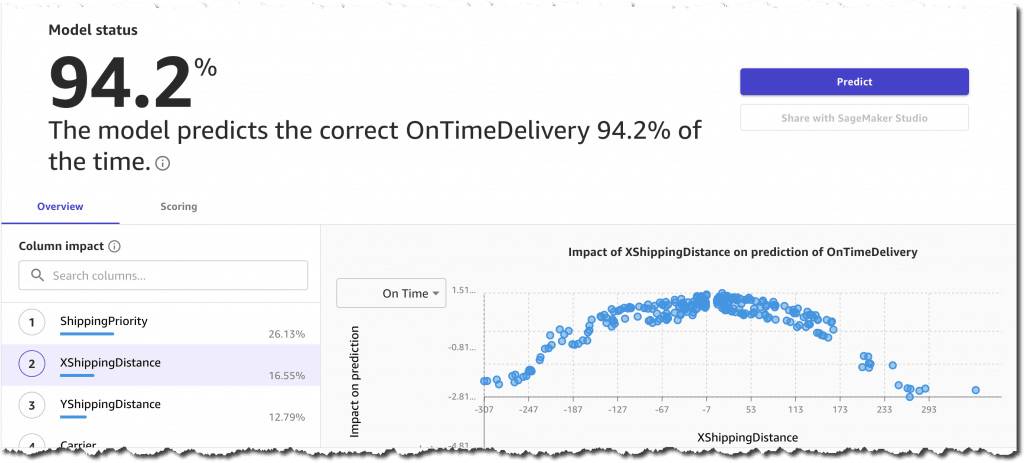
AppSheet vs Airtable: In-Depth Comparison
If you’re deciding between AppSheet and Airtable, knowing their differences is important. Both tools are designed to build apps and manage data without coding. This guide will...
Machine learning provides organizations with powerful capabilities of business planning, when it comes to demand forecasting, improving the efficiency of processes, and more.

With No Code being the great equalizer in software development, it would make sense that machine learning would also be implemented in this category of software.
And with AWS (Amazon Web Services) having stepped in the No Code market with their Honeycode web and mobile app builder in mid-2020, it also makes sense that they would have eventually bridged the gap between No Code and ML.
On November 30, Amazon announced the launch of their new No Code machine learning tool called Amazon SageMaker Canvas.
In short, the tool offers an easy way to develop, run and deploy machine learning models with no previous experience required. Users will not have to learn various ML-related techniques like algorithms, evaluation metrics, training parameters, etc., to launch their first model.
The platform enables accessing data banks in local storage and in the cloud. These can be used to combine datasets together, train accurate ML data analysis models and ask for new predictions continuously, as datasets are populated with more data points.

The new tool uses the same technological basis as Amazon SageMaker – Amazon’s machine learning tool for professionals like data scientists and machine learning operations engineers, albeit wrapped in a much more user-friendly UI.
The powerful ML tool automatically combines and cleans users’ data, creates multiple analysis models, selects the ones that perform the most efficiently, and finishes with predictions separately or in batches.
Many problem types are supported, such as:
The tool has numerous use cases, like inventory optimization, churn reduction, fraud detection, and more.
With SageMaker Canvas, joining datasets is easy – the app automatically identifies common columns between datasets, such as an Order ID code.
Using those columns, the tool finds out which data points are shared between the two sets (uploaded files) and wields them as an anchor to combine these points into a single database file, which will result in a more accurate model compared to running two models on two different datasets.
Before finalizing the joined datasets, the resulting sheet can be previewed in order to manually check for missing columns, datapoints, invalid values and simply deselect the data that the user does not want to be included in the end result.

Before generating a model, the user can preview the model itself too. For example, the tool shows the estimated accuracy of each column of data and identifies which column has the highest impact on the whole model.
Using SageMaker Canvas, ML models can be run on imported datasets, together with the data stored on Snowflake, Amazon S3, and Amazon Snowflake.
Even though SageMaker Canvas is only currently launched in select regions (EU: Germany, Ireland; US: Ohio, North Virginia, Oregon), it should eventually become available worldwide.
The tool can be experimented with before making a financial commitment, as it features a free plan that allows people to use SageMaker Canvas for 2 months.
The free tier is limited in terms of what users can do. For example, the free version is capped at 750 hours/month of session time, 10 model creation requests/month, with each model itself being capped at 1M cells.
Paid plans, on the other hand, are very flexible, there are no standardized tiers, each user pays an exact price based on their usage of the platform, which we think is very fair.

We predict that this is only the beginning of No Code tools aimed at liberalizing machine learning. Since Amazon launched its own No Code ML platform, it is highly likely that other providers will follow suit.
AWS entered a market that while certainly is not saturated, has some powerful competitors already waiting. Google, for example, even has several products aimed at the segment: Teachable Machine, Google Cloud Auto ML, and Google ML Kit. Apple also has its own platform, called CreateML, aimed specifically at Mac users.
There are other, smaller competitors as well, Obviously AI, for example, which we mentioned in our article on No Code AI, Lobe, FritzAI, and others.
Today’s enterprises are looking for ways to enhance their business performance through technology and innovative solutions.
Whether it comes to using predictive maintenance or machine learning algorithms, companies want to take advantage of these technological advancements, but lack the tools required to do so due to how complex they are.
Being able to upload, edit, and export complex datasets and train machine learning models without a single line of code or advanced knowledge on the subject unlocks a world of possibilities for those of us who are interested in using these tools or simply know the benefits they can bring to a business but do not have formal training in the sphere.
If you’re looking to try SageMaker, you will need a database to train your models on. Here’s all you need to know about No Code databases.
We will keep a close eye on Amazon and their No Code developments and update our readers as new features and applications are released.